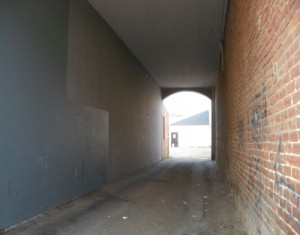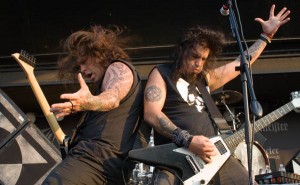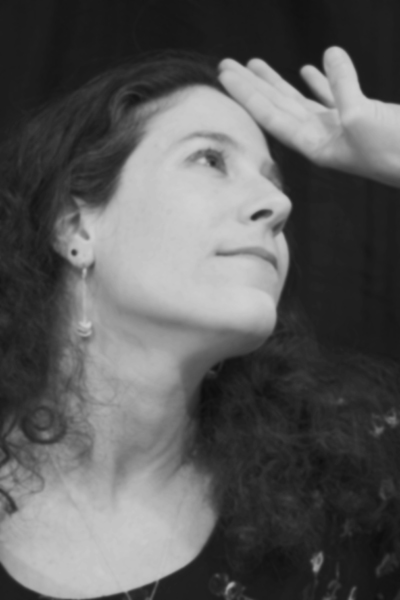Defining Myself
October 27th, 2008I recently read Cay Lang’s “Taking the Leap: Building a Career as a Visual Artist.” Then I read it again. I got a lot out of the book, both from its high-level guidelines and nitty gritty details. Each of these is blog worthy, but one was a genuine epiphany.
The term “artist bio” is a misnomer: It has virtually nothing to do with the artist’s life and everything to do with their exhibitions and education. It is the artist statement in which one can wax nostalgic about a person or event that had a profound impact on their development as an artist. When I was preparing for my solo show “In Plain Sight”—comprised of subjects that would ordinarily be overlooked, such as spider web-laden clothespins and an apparently nondescript alley—I wrote an artist statement that defined what I was interested in photographing, and why. Moreover, it defined me as an artist:
Driving with my mother down a freeway in Los Angeles when I was six or seven years old, I suddenly started laughing. My mother asked me what was so funny, and I replied that I’d just realized that traffic was made up of cars. As an adolescent deconstructionist I was beginning to realize that while the whole may be greater than the sum of its parts, the parts are interesting, too…. When you get up close to the perceived ordinary, or glance around as you hurry to work, you may be surprised by the subjects hidden in plain sight.
This year I had the opportunity to take some very different photos. One group of these was concert photos of musicians, both at a heavy metal festival and at a country show. Another was a set of portraits that were neither typical “family photos” nor “glamour shots,” but an attempt to draw out something in their subject which lurked below the surface. I really enjoyed taking these photos, and I wanted to take more like them. And I felt guilty about it.
I had heard many times that an artist needs to be able to present a cohesive body of work, because providing a mishmash of images demonstrates (professional) immaturity. It suggests that you have not found your “voice.” Lang writes in the introduction to her book:
In order to market your art, you need a body of work to market. A body of work is a series of pieces that holds together in some way, that seems to have something in common…. The art must be united thematically or stylistically, and usually both…. It should show an in-depth exploration of a single idea, or related ideas (p. xviii).
This reinforced my belief that I was “supposed” to be taking only one kind of photo, and that the music and portrait photos were a distraction causing me to lose touch with my “voice.” This was further amplified in the chapter “Creating Your Artist’s Packet,” in which Lang writes:
If you are an artist who works in several mediums or in more than one style… you will have to decide which body of work to send to each recipient. Mixing different kinds of work is one of the first marks of the dilettante and is the kiss of death to your proposal. A gallery wants to know what it is getting when it gives an artist a show (pp. 43-44).
However, later in the book, tucked away in the chapter “Creating Your Command Post” was a gem which could easily have been overlooked: In a list of materials to keep on hand Lang includes, “… your artist statements (one for each different body of work)…” (p.108). That parenthetical note triggered my epiphany.
This simple comment, which did not even warrant an entry in the index under “artist statement,” clarified for me that a statement is specific to a particular series. This sounds so simple, but it was a revelation. The statement defines a series of photos; it does not define me. My photos of quotidian subjects, which I will no doubt continue to take, were captured in my series “In Plain Sight” and defined in its artist statement, but they don’t define me.
Permitting myself to be convinced that I was only “allowed” to continue taking certain photos makes me sound kind of stupid. Even worse, it makes me sound cowardly, like I was suppressing my creativity to conform to market pressures. I know I’m not stupid, but I was suffering from the naivety of the “emerging artist” trying to learn the ropes of the business of art. And I don’t consider myself a craven; I always intended to explore the portrait and music photography—indeed to photograph whatever I like—but now realize that it would not undermine my identity as a photographer to exhibit them as well.
Many years ago I took drum lessons. I am reminded of one lesson where my instructor played a piece with the notation that it should be performed with a free rhythm, not in strict tempo. I asked him, incredulous, and with complete sincerity, “Can you do that?” Yes, you can.
In “Taking the Leap” Lang suggests writing down ideas before you go to sleep. I had shrugged that off with the conviction that I take photos of subjects hidden in plain sight, period. I can’t plan for this, so I don’t need to think about what kinds of photos I would like to take. “Conviction” is a particularly appropriate word: I had been convicted and sentenced to taking a certain kind of photos. Now I am released on my own recognizance to explore anything that strikes my fancy.
Michael Singman-Aste
Postdiluvian Photo
Tags: artist bio, artist statement, Cay Lang, Postdiluvian Photo, Taking the Leap






[…] I think Wolf wants his work to be shocking. His architectural photos demonstrate great technical proficiency and a keen eye, but photos like #4, above, look more like a still from a home video. Photos like that may have their place, but they simply do not belong with the others in this portfolio. They prevent the show from achieving any cohesiveness. […]
[…] my post “Defining Myself” I wrote about the epipanies that accompanied reading Cay Lang’s “Taking the […]